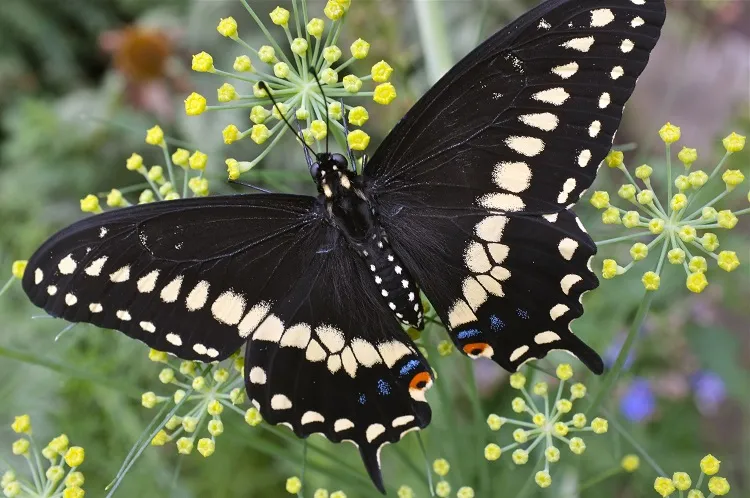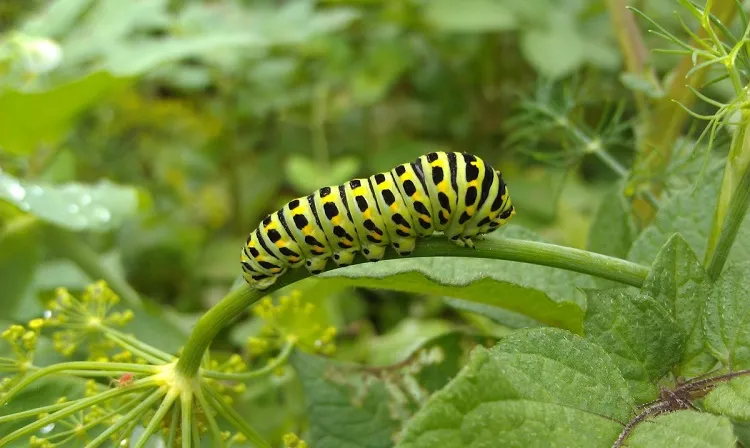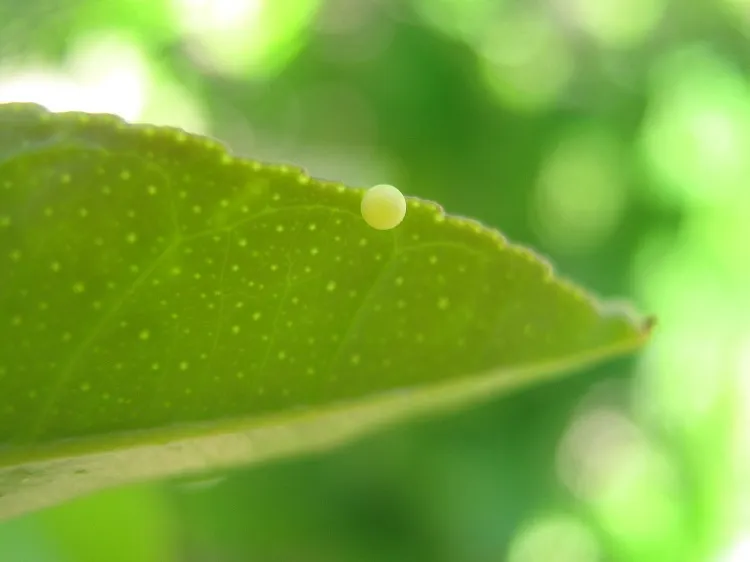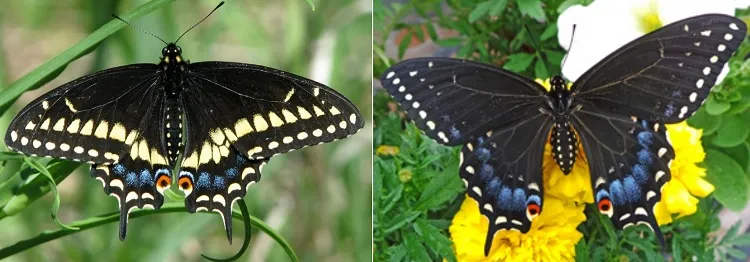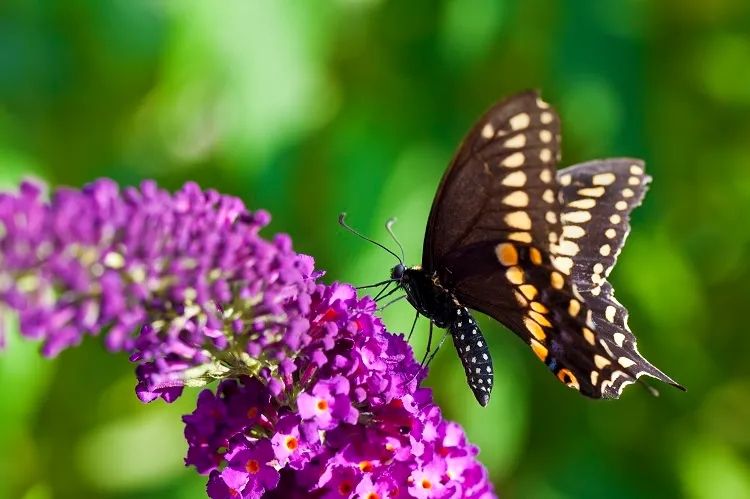If you love flowers and other natural beauties, you’re probably looking for ways to attract butterflies, these wonderful pollinators, for your garden. The black swallowtail is one light-winged creature that can add fascination to the backyard. With a little effort, you can create some space with suitable herbs for this flying “flower”, thus enriching your garden with smell and color, and at the same time doing a precious contribution to saving the environment for this butterfly. In this article, you’ll receive valuable information on what you need to know about this admirable creation of nature, and how to attract black swallowtail in the garden.
What is a Black Swallowtail?
The black swallowtail (Papilio polyxenes) is a butterfly native to North America. It differs from the Eastern tiger swallowtail, with which it’s often confused, with a more defined band of blue near its tails, and its wingspan is slightly smaller (2.5 to 3.5 inches). Adult butterflies have black wings with a bright yellow band on their forewings and blue spots on the hind parts.
How Rare are Black Swallowtails?
Black swallowtails are not considered a rare species, but their populations can fluctuate depending on factors such as changes in weather. They are particularly vulnerable to habitat loss, and pesticide use. If you live in an area with suitable habitat for them, you’ll be able to see these caterpillars regularly during their flight season from spring to fall. In some regions, there may be two or three broods per year. With a little bit of patience and growing a few suitable plants, you’ll succeed to attract black swallowtail in your garden and enjoy their elegance and light-winged flight.
What Do Black Swallowtails Eat?
As caterpillars, black swallowtails feed on a variety of plants, including members of the carrot family (Apiaceae) such as dill, fennel, and parsley. They may also consume plants from the rue families (Rutaceae), including rue. Their other favorite meal sources are golden Alexanders and Queen Anne’s lace. Adult black swallowtails feed on nectar from a range of flowers, such as milkweed, phlox, and purple coneflower. Planting some of them in your garden will help attract black swallowtail near your home, as well as other pollinators like bees.
What Color are Black Swallowtail Eggs?
This butterflies’ eggs are small and round, with a diameter of less than 1 millimeter. They’re usually laid singly on the leaves or stems of the caterpillar’s host plant. The eggs’ color varies from pale yellow when they are young, and gradually darkens to a grayish-brown as they mature. If you’re trying to spot them in your garden, look for these eggs on the underside of leaves, especially on plants in the carrot family.
How Can You Tell if a Black Swallowtail is Male or Female?
There are a few ways to differentiate male from female black swallowtails:
- Wing Shape. Male black swallowtails have a more angular shape to their hind wings, while female ones tend to be rounded.
- Coloration. Males tend to have a solid black coloration, and brighter, vivid yellow bands on their hind wings, on the other hand, females are colored in more muted yellow. They may also have a row of spots on their hind wings.
- Behavior. Males usually have more territorial and aggressive behavior, patrolling the area and chasing off other butterflies. Females, on the contrary, are calmer, and tend to be focused on finding host plants to lay their eggs on.
How to Attract Black Swallowtails to Your Garden?
If you’re looking to attract black swallowtails to your garden, the following tips will help you do this:
- Plant host plants. Caterpillars need suitable host plants to feed on. So planting members of the carrot and rue families, like dill, fennel, and parsley will help much to attract black swallowtails.
- Provide nectar sources. Adult black swallowtails need to feed on nectar to fuel their flights and reproductive activities. Planting flowers with bright colors and a sweet scent, such as phlox, milkweed, and coneflower, can provide a good nectar source for these butterflies.
- Consider a sunny spot. Black swallowtails prefer sunny areas, so think of planting host plants and nectar sources in a sun-lit location in your garden.
- Provide shelter. Butterflies need shelter from the wind and predators. So, planting tall grasses and shrubs around your garden can provide a good hiding spot for black swallowtails.
- Avoid pesticides. Pesticides are harmful to black swallowtails and other pollinators. Consider using natural methods to control pests, such as introducing insects, which feed on them or using organic pest control products.
- Maintain your garden. Keeping your garden healthy and well-maintained will help to attract black swallowtails and other pollinators. Regularly water, fertilize, and prune your plants to keep them healthy and thriving.
Attracting black swallowtails to your garden will create beauty and diversity in your backyard ecosystem. By providing host plants, nectar sources, shelter, and a sunlit area, you can make a habitat that’s conducive to black swallowtail survival and reproduction. And by maintaining your garden in this way, you can help to ensure a healthy and vibrant environment for these wonderful butterflies, and for other living creatures.

